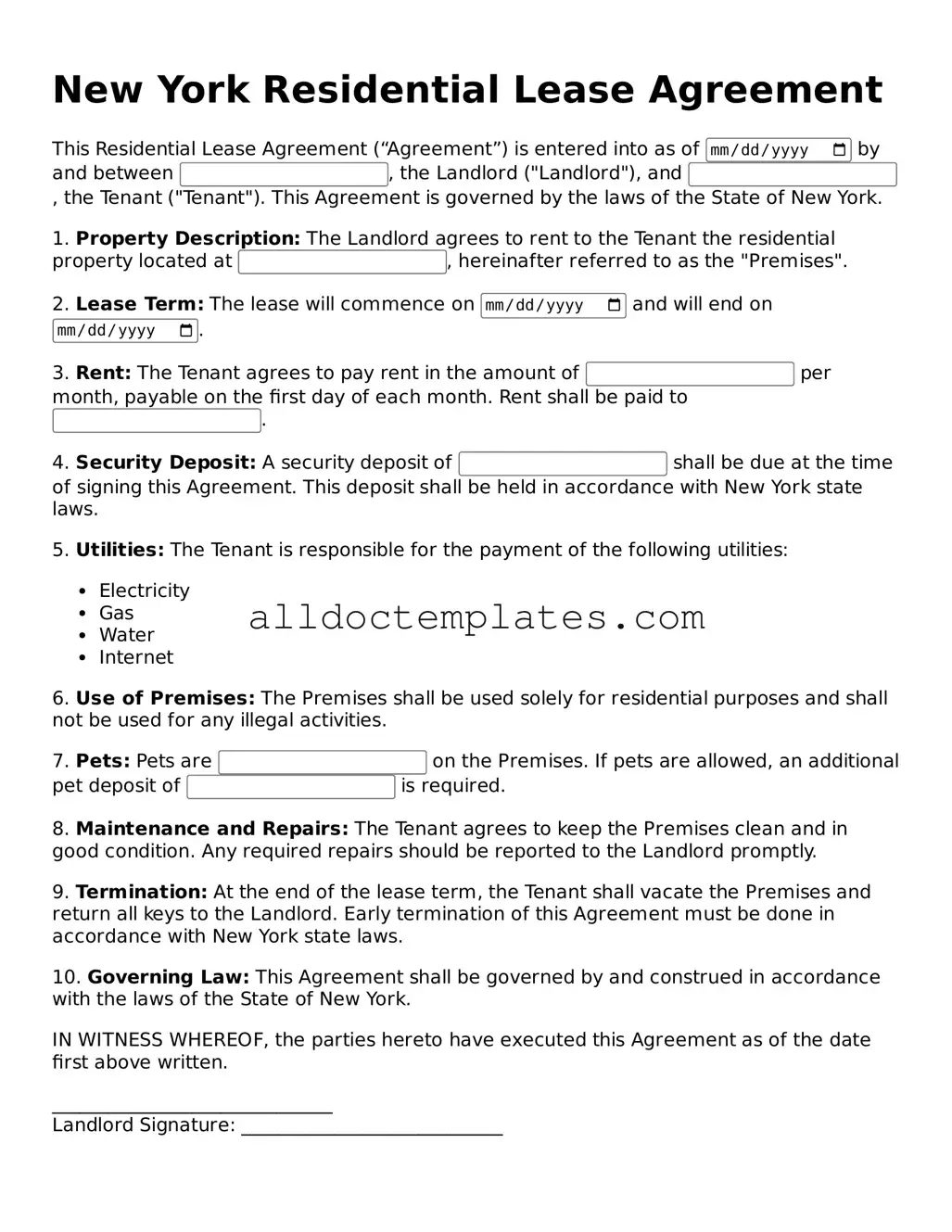Free Residential Lease Agreement Document for New York State
A New York Residential Lease Agreement is a legally binding document that outlines the terms and conditions between a landlord and tenant for renting residential property. This agreement serves to protect the rights and responsibilities of both parties, ensuring a clear understanding of the rental arrangement. Whether you are a first-time renter or a seasoned landlord, grasping the key components of this form is essential for a smooth leasing experience.
Get Your Form Now
